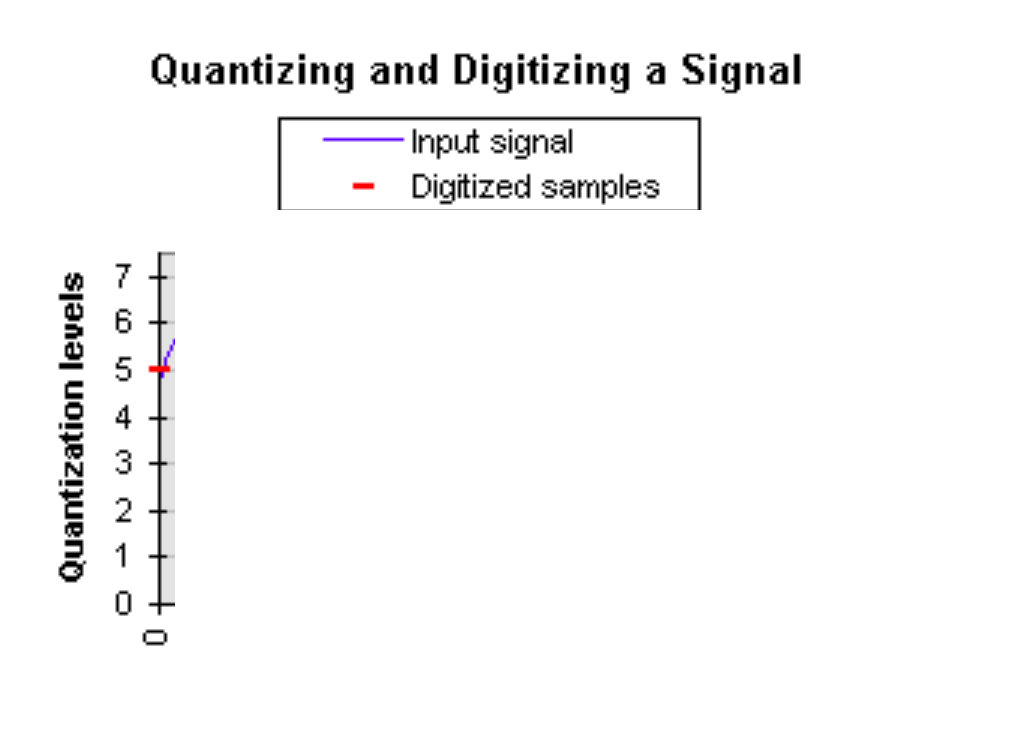A Comprehensive Guide on LLM Quantization and Use Cases
Introduction
Large Language Models (LLMs) are revolutionizing natural language processing, but their immense size and computational demands limit deployment. Quantization, a technique to shrink models and lower computational costs, is a crucial solution. This paper comprehensively explores LLM quantization, examining various methods, their effects on performance, and practical applications across diverse fields. We also discuss challenges and future research directions.

Overview
This paper analyzes:
- How quantization reduces the computational burden of LLMs without significant performance loss.
- The challenges posed by the size and resource needs of advanced LLMs.
- Quantization as a method to discretize continuous values, simplifying LLMs.
- Different quantization methods (post-training and quantization-aware training), and their performance impact.
- The potential of quantized LLMs in edge computing, mobile apps, and autonomous systems.
- Trade-offs, hardware considerations, and the need for ongoing research to improve LLM quantization.
Table of contents
- The Rise of Large Language Models
- LLM Quantization: An In-Depth Look
- Understanding Quantization
- Quantization Methods
- Visualizations
- Quantization's Effect on Model Performance
- Key Metrics
- Applications of Quantized LLMs
- Challenges in LLM Quantization
- Frequently Asked Questions
The Rise of Large Language Models
LLMs represent a major advancement in natural language processing, powering innovative applications. However, their size and computational intensity make deployment on resource-limited devices difficult. Quantization, a technique to reduce model complexity while preserving functionality, offers a promising solution to this problem. This paper provides a thorough examination of LLM quantization, covering its theoretical foundations, practical implementation, and real-world uses. We analyze different quantization methods, their impact on performance, and deployment challenges to provide a complete understanding.
LLM Quantization: An In-Depth Look
Understanding Quantization
Quantization maps continuous values to discrete representations, usually with lower bit-widths. In LLMs, this means reducing the precision of weights and activations from floating-point to lower-bit integers or fixed-point formats. This results in smaller models, faster inference, and reduced memory usage.
Quantization Methods
-
Post-training Quantization:
- Uniform quantization: Maps floating-point values to a fixed number of quantization levels. This is straightforward but can introduce errors, especially with skewed data.
- Dynamic quantization: Adapts quantization parameters during inference based on input statistics. This can improve accuracy but adds computational overhead.
- Weight clustering: Groups weights into clusters, representing each with a central value. This reduces the number of unique weights, saving memory and potentially improving computation.
- Quantization-Aware Training (QAT): Integrates quantization into training, improving performance. Techniques include simulated quantization, the straight-through estimator (STE), and differentiable quantization.
Visualizations
Uniform Quantization:

Illustrates mapping floating-point values to discrete levels.
Dynamic Quantization:

Shows how the quantization range adjusts based on input values.
Weight Clustering:

Depicts grouping weights into clusters represented by central values.
Quantization-Aware Training:

Illustrates the integration of quantization into the training process.
Quantization's Effect on Model Performance
Quantization inevitably reduces performance. The extent of this depends on:
- Model Architecture: Deeper, wider models are more robust to quantization.
- Dataset Size and Complexity: Larger, more complex datasets mitigate performance loss.
- Quantization Bitwidth: Lower bitwidths lead to greater performance drops.
- Quantization Method: The chosen method significantly impacts performance.
Key Metrics
Performance is assessed using:
- Accuracy: Measures performance on a given task (e.g., classification accuracy, BLEU score).
- Model Size: Quantifies the reduction in model size.
- Inference Speed: Evaluates speed improvements from quantization.
- Energy Consumption: Measures the power efficiency of the quantized model.
Applications of Quantized LLMs
Quantized LLMs are transforming various applications:
- Edge Computing: Deploying LLMs on resource-constrained devices for real-time applications.
- Mobile Applications: Improving the performance and efficiency of mobile apps.
- Internet of Things (IoT): Enabling intelligent capabilities on IoT devices.
- Autonomous Systems: Reducing computational costs for real-time decision-making.
- Natural Language Understanding (NLU): Accelerating NLU tasks across various domains.
(Python code snippet for autonomous systems omitted for brevity, but the description remains.)
Challenges in LLM Quantization
Despite its potential, LLM quantization faces challenges:
- Performance-Accuracy Trade-off: Balancing model size reduction with performance degradation.
- Hardware Acceleration: Developing specialized hardware for efficient quantization operations.
- Task-Specific Quantization: Tailoring techniques for different tasks and domains.
Future Research:
- Developing novel quantization methods with minimal performance loss.
- Exploring hardware-software co-design for optimized quantization.
- Investigating the impact of quantization on different LLM architectures.
- Quantifying the environmental benefits of LLM quantization.
Conclusion
LLM quantization is crucial for deploying large language models on resource-limited platforms. By carefully selecting quantization methods, evaluation metrics, and application requirements, practitioners can effectively utilize this technique to achieve optimal performance and efficiency. Continued research promises further advancements, unlocking new possibilities for AI applications.
Frequently Asked Questions
Q1. What is LLM Quantization? It reduces the precision of model weights and activations to lower-bit formats, resulting in smaller, faster, and more memory-efficient models.
Q2. What are the main quantization methods? Post-Training Quantization (uniform and dynamic) and Quantization-Aware Training (QAT).
Q3. What challenges does LLM Quantization face? Balancing performance and accuracy, the need for specialized hardware, and the development of task-specific quantization techniques.
Q4. How does quantization affect model performance? It can degrade performance, but the impact varies depending on model architecture, dataset complexity, and the bitwidth used.
The above is the detailed content of A Comprehensive Guide on LLM Quantization and Use Cases. For more information, please follow other related articles on the PHP Chinese website!

Hot AI Tools

Undresser.AI Undress
AI-powered app for creating realistic nude photos

AI Clothes Remover
Online AI tool for removing clothes from photos.

Undress AI Tool
Undress images for free

Clothoff.io
AI clothes remover

Video Face Swap
Swap faces in any video effortlessly with our completely free AI face swap tool!

Hot Article

Hot Tools

Notepad++7.3.1
Easy-to-use and free code editor

SublimeText3 Chinese version
Chinese version, very easy to use

Zend Studio 13.0.1
Powerful PHP integrated development environment

Dreamweaver CS6
Visual web development tools

SublimeText3 Mac version
God-level code editing software (SublimeText3)

Hot Topics
 1670
1670
 14
14
 1428
1428
 52
52
 1329
1329
 25
25
 1274
1274
 29
29
 1256
1256
 24
24
 How to Build MultiModal AI Agents Using Agno Framework?
Apr 23, 2025 am 11:30 AM
How to Build MultiModal AI Agents Using Agno Framework?
Apr 23, 2025 am 11:30 AM
While working on Agentic AI, developers often find themselves navigating the trade-offs between speed, flexibility, and resource efficiency. I have been exploring the Agentic AI framework and came across Agno (earlier it was Phi-
 How to Add a Column in SQL? - Analytics Vidhya
Apr 17, 2025 am 11:43 AM
How to Add a Column in SQL? - Analytics Vidhya
Apr 17, 2025 am 11:43 AM
SQL's ALTER TABLE Statement: Dynamically Adding Columns to Your Database In data management, SQL's adaptability is crucial. Need to adjust your database structure on the fly? The ALTER TABLE statement is your solution. This guide details adding colu
 OpenAI Shifts Focus With GPT-4.1, Prioritizes Coding And Cost Efficiency
Apr 16, 2025 am 11:37 AM
OpenAI Shifts Focus With GPT-4.1, Prioritizes Coding And Cost Efficiency
Apr 16, 2025 am 11:37 AM
The release includes three distinct models, GPT-4.1, GPT-4.1 mini and GPT-4.1 nano, signaling a move toward task-specific optimizations within the large language model landscape. These models are not immediately replacing user-facing interfaces like
 Beyond The Llama Drama: 4 New Benchmarks For Large Language Models
Apr 14, 2025 am 11:09 AM
Beyond The Llama Drama: 4 New Benchmarks For Large Language Models
Apr 14, 2025 am 11:09 AM
Troubled Benchmarks: A Llama Case Study In early April 2025, Meta unveiled its Llama 4 suite of models, boasting impressive performance metrics that positioned them favorably against competitors like GPT-4o and Claude 3.5 Sonnet. Central to the launc
 New Short Course on Embedding Models by Andrew Ng
Apr 15, 2025 am 11:32 AM
New Short Course on Embedding Models by Andrew Ng
Apr 15, 2025 am 11:32 AM
Unlock the Power of Embedding Models: A Deep Dive into Andrew Ng's New Course Imagine a future where machines understand and respond to your questions with perfect accuracy. This isn't science fiction; thanks to advancements in AI, it's becoming a r
 How ADHD Games, Health Tools & AI Chatbots Are Transforming Global Health
Apr 14, 2025 am 11:27 AM
How ADHD Games, Health Tools & AI Chatbots Are Transforming Global Health
Apr 14, 2025 am 11:27 AM
Can a video game ease anxiety, build focus, or support a child with ADHD? As healthcare challenges surge globally — especially among youth — innovators are turning to an unlikely tool: video games. Now one of the world’s largest entertainment indus
 Rocket Launch Simulation and Analysis using RocketPy - Analytics Vidhya
Apr 19, 2025 am 11:12 AM
Rocket Launch Simulation and Analysis using RocketPy - Analytics Vidhya
Apr 19, 2025 am 11:12 AM
Simulate Rocket Launches with RocketPy: A Comprehensive Guide This article guides you through simulating high-power rocket launches using RocketPy, a powerful Python library. We'll cover everything from defining rocket components to analyzing simula
 Google Unveils The Most Comprehensive Agent Strategy At Cloud Next 2025
Apr 15, 2025 am 11:14 AM
Google Unveils The Most Comprehensive Agent Strategy At Cloud Next 2025
Apr 15, 2025 am 11:14 AM
Gemini as the Foundation of Google’s AI Strategy Gemini is the cornerstone of Google’s AI agent strategy, leveraging its advanced multimodal capabilities to process and generate responses across text, images, audio, video and code. Developed by DeepM




